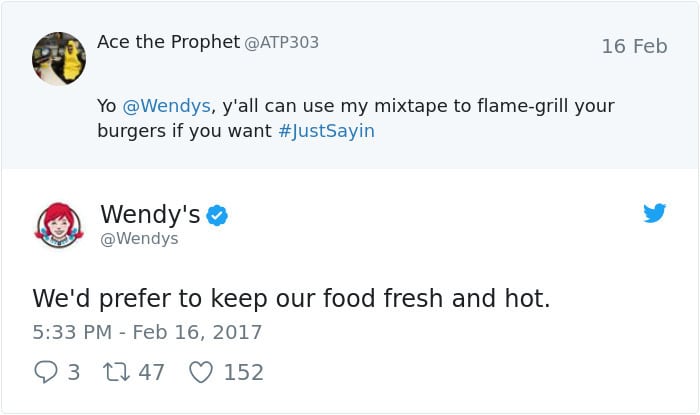You can now build a brand for your small business.
For the longest time, becoming a “brand” was something that only large companies had the luxury of doing.
But now, internet innovations have made it possible for every small business and entrepreneur to establish their own brand.
That’s created a major shift in the way people select what companies they choose to spend their money with.
How a brand comes across isn’t something marketers get to dictate anymore.
Your brand’s image has been democratized. Click To TweetYour audience will decide for themselves how to perceive your brand, and they’ll base it on what you do.
Today, I want to share some ways you get to influence your audience’s decision and present your brand the way you want them to see it.
Applied correctly, you’ll be able to use this guide to grow your brand into a legacy you can be proud of.
Contents
You Can’t Build A Brand That Doesn’t Matter To You
Every successful brand is built around an idea that fuels its founders.
There needs to be a sense of passion and excitement around not only the brand but the reason it exists.
Before you begin building your brand, make sure you know why you do what you do.
If that why gives you an unquenchable fire, this is where you should be building your brand.
If it doesn’t, it might be time to choose another path.
You see, over the course of this guide, you’re going to learn to bring your brand to life.
You can’t do that for something you don’t care about.
Offer Your Brand An Identity Of Its Own
Your brand is unique.
You have goals and a perspective that nobody else in your industry has.
To effectively build your brand, you need to convey that to your audience.
Take a look at your mission statement, then use it to guide your decisions throughout the strategy we’re going to discuss to build your brand.
Here is what’s going to give your brand that unique identity.
What’s Your Target Audience Look Like?
Every time you make contact with your audience – from top-of-the-funnel content to the completion of a sale – is a dialogue.
These conversations need to go well, or it could cost your business its future.
That means you need to understand your audience. Click To TweetBy listening to their needs carefully, you can determine what they’re looking for from you.
Ask a few questions about your ideal audience to discover better ways to communicate with them.
- How old are they?
- What’s they’re gender?
- What level of education do they have?
- Where do they live geographically?
- What kind of hobbies and interests do they have?
- How do they spend their time?
- What’s most important to them – their driving factor?
- What are their favorite cultural icons or brands?
- Where do they spend their online time?
- What social platforms do they participate on most?
- What can your brand do for them?
- In what ways will your content influence their decisions?
If you take the time to learn more about your audience, you’ll give yourself the chance to communicate with them more effectively.
Why Does Your Brand Exist?
It’s not normal for a successful brand to be created solely to make money.
Typically, there is a much larger force at play.
They’re looking to solve a problem that they see in the world.
Brands exist to take on a challenge, and they’re fueled by an internal drive to share something big.
This is how tiny companies and huge brands get their start.
And that start has a story.
That story is the reason your business exists, and it’s the core of every decision you make as a company.
Sharing that story is an invitation for your audience to come with you. Click To TweetYou’re asking them to be a part of your company’s journey.
A huge draw in that resides in the values you share.
Those values spring from your story, and you can better elaborate on those elements by making your audience a part of the story.
By successfully bringing them into your tale, your audience no longer sees their interaction with your company as a part of the sale.
They start to feel like an integral part of your company. They take ownership.
Brands have done a terrific job at this for years.
They’re all about creating the magic. In fact, magic is a part of their story.
They exemplify the idea that the customer is the main character in their story as well.
They have policies in place that, no matter what, protect their customers from anything that might destroy the magic for their guests.
Especially children.
Policies that I have experienced firsthand include:
- No characters out-of-costume in front of guests.
- All cast members must be in-character when they’re in guest-accessible areas.
- Cast and crew – including executives – are required to be polite and use polite language.
- There are no photos or videos allowed in backstage areas.
Each of these policies is in place to make sure the magic is never destroyed for their most important guests – the children.
By creating this environment, children are allowed to use their imagination to become a part of the magic.
What Kind Of Personality Does Your Brand Have?
Social media has made brands as a whole into entities that people can interact with.
That’s forced the idea of a brand to change from the one-dimensional shadows they used to be before the internet.
In fact, until the modern web and social media came about, most companies were indistinguishable.
But things have changed.
Social media has become a point of contact that can expose flat corporations and separate them from those companies with real personality.
Think about Wendy’s and their famous, savage Twitter account.

They have achieved cultural icon status in places that don’t even have a Wendy’s.
If you want a shot at doing the same or even surviving a world where the internet dictates business, your brand needs its own personality.
Think of your brand as a person.
You’re about to create a fictitious character that represents your brand.
- What kind of habits does your brand have?
- Does your brand have dreams it hopes to achieve in its life?
- Is your brand fashion-savvy, or does it have a style all its own?
- How does it sound when it speaks? What kind of tone does it use?
- What’s its favorite food?
- Who does your brand hang out with?
- What does your brand do for fun?
These kinds of questions might feel odd to ask of your brand.
However, they’ll help you characterize its personality.
They’re also going to be a starting point for your public image.
Your Brand Needs A Sense Of Style
Just like a person, your brand should have an identity.
It also needs a style suiting of that identity.
This is where the philosophy becomes application.
You’re going to use what you’ve done so far to give your brand a look.
Here’s what you need to look at to create a visual representation of your brand.
What Kind Of Feel Does Your Brand Give Off?
You ever look at someone’s fashion sense and get a “feel” for their style?
The same can happen with a brand’s look.
Your brand’s style is going to represent the foundation of all the visual elements that you’ll use to present your brand.
Your brand could come off:
- Hipster
- Techy
- Vintage
- Classic
- Artistic
- Holistic
- Outdoorsy
- Techy
There is any number of styles that might accurately reflect your brand.
Those styles have got to march the identity you’ve chosen for your brand.
For example, it’s probably not a great idea to use a psychedelic, flowered look if you’re starting a law firm. Click To TweetI’m just saying.
Stick with the looks and feels that match.
You’ll get your story across better.
What Color Will Reflect Your Brand Best?
Stop. Right. There.
I know you’re about to repeat the colors of your favorite sports team but think about this for a minute.
Colors can be very associative with a brand, making them important to developing yours.
If I asked you to think of McDonald’s, you probably immediately see everything in red and yellow, don’t you?
What about the Dodgers, whose color is so iconic they nearly got their own Crayola color?
Colors are a big part of those thoughts, aren’t they?
That’s because these companies, along with numerous others, have done a stellar job at branding.
If you’re not sure what colors you should go with, start with a little education.
Or do what I do in this process and pick a foundational color, then get some help with the rest of the scheme.
Yes, I get help.
It’s important to make sure that the colors go well together and don’t clash or create a situation where your print materials or website are hard to read.
It’s also important to make sure the colors you choose evoke the right feelings.
I’ve heard a lot about color psychology and even studied it quite a bit.
I’m not sure I’m 100% sold, though.
However, you ought to know that at least some of color theory is correct.
If you’re looking to make people hungry, use red and yellow (I’m looking back to that bit on McDonald’s).
Sports teams in black tend to receive more penalties.
Red tends to make people react with more speed and force.
It also makes people worse at taking tests.
But most of this evidence is anecdotal at best.
I feel like, more than anything, the color needs to generally vibe right with you. Click To TweetIf it makes you feel the way you want your customers to feel, it’s right.
But please, don’t just choose a color or color combination because “It looks cool.”
That’s a horrible idea.
What Logo Will People Know You By?
Funny, it took all that to get to the one thing people think of when they think of branding.
But that’s the truth, isn’t it?
Branding is way more than just your logo.
However, it is the most recognizable part of your brand, so you’ve got to have one that sticks with people.
You can immediately bring to mind some of the biggest brands’ logos, can’t you?
- Nike
- McDonald’s
- Starbucks
- Apple
- Fed Ex
- Mercedes Benz
- Coca-Cola
- Chanel
- Pepsi
- Mickey Mouse
Not that you need to, but check your answers.
That shows you how big a role they have helping connect you to your audience.
Choosing the right logo is critical.
Some things you need to remember when creating your logo.
- Keep it simple. It has to look good in a small format as well as large.
- Don’t rely on color placement to define the shape of the logo. What’s it going to look like in greyscale?
- Make sure it represents your brand’s image in just a glance.
- Try not to use clip-art. Generic never built a memorable brand.
- Avoid logo generators. They tend to create similar and duplicate logos often.
Remember those styles we talked about? It’s time to pull out that list.
Define a logo that fits those styles and looks like it belongs uniquely to your brand.
What Message Is Your Font Sending?
When it comes to fonts, so many things can go so wrong so quickly.
This is intensely important, whether you realize it or not.
Let’s look at an iconic company. Say Apple.
What happens when we mess with their font a little?

It becomes a whole different company, despite the same logo.
How much of an impact will it have on your brand, then?
When you’re looking for a font, here are some questions to ask:
- What is the tone you want your logo to have? Think back to your brand identity. Select a logo that gives off the same vibe.
- Who is your target audience? Choose a logo that reflects a manner of speaking that’s fitting.
- Do you need a serif? That’s the little tail on the tips of the letters. That’s really going to depend, again, on the tone you’re trying to set. Serifs are more classic. Sans-serifs speak better to a younger crowd.
- Is it legible? Self-explanatory, I think.
- Is it too heavy or light? Think about how much your font is going to weigh into all the text you create.
- Is it clean enough to resize? It has to be easy to read when it’s big and when it’s small.
- Does it pair well? Remember that you need to be able to match it to a contrasting font for most of your print and web materials.
- How decorative does it need to be? That’s going to weigh heavily on your brand’s style.
Your font is going to say a lot about your brand (pun intended).
Make sure it works right.
Giving Your Brand A Voice
Now that you know the heart and soul of your brand and you’ve put the finishing polish on it, it’s time to decide what it’s going to sound like.
See, your audience isn’t just looking at you.
They’re going to interact with your brand.
They’ll do it online via text. They’ll call and visit to communicate verbally.
You need to set a tone that’s going to encourage engagement.
You need to give your brand its voice.
What’s In A Name?
Have you ever had to name a child?
If you have, you probably thought about all the things that might happen if you picked the wrong one.
Will they get beat up for their name? Will the teacher always mispronounce it?
Your brand name is going to have similar lasting effects on your company.
Think about it.
Your brand name has to encapsulate your brand image, communicate what you do, and still manage to be easy to spell, say, and secure online through a domain name.
It should reflect all those things in a simple 1-3 words.
Build a list of potential names.
Think of things that really get to the core of your mission.
Narrow it down from there.
For inspiration, check out how these 9 iconic companies got their names.
Now that you have a brand name, consider if a tagline is right for your brand.
It makes sense for some. For others, it won’t.
But a tagline can if appropriate, do wonders for your brand.
Think about these:
- Nike: Just do it.
- Capital One: What’s in your wallet?
- Gatorade: Is it in you?
- Staples: That was easy.
- Wheaties: The breakfast of champions.
- Visceral Concepts: Your image, defined.
See, with a proper tagline, your brand becomes fully understood.
What Language Does Your Brand Speak?
In this case, we’re not talking about the language you do business in.
Every brand has a unique set of words it uses to describe itself.
These words reflect your core values during customer interactions.
Take Target as an example. Their focus is on teamwork.
- Employees are Team Members.
- Executives are Team Leaders.
- Heavy lifting requires a Team Lift.
- Meetings are Huddles.
There are more examples from dozens of companies, but I think you get the point.
It should be easy to decide what euphemisms you’d like to use once you have your brand identity clarified.
Look at what you’re going to use to reflect those values.
It’s not just alternative words, either.
There need to be a focus on the ideas your company reflects. Click To TweetIf you, for example, are running a financial services company, you might think of words like wealth, growth, goals, gains, returns, and investments.
These words should permeate all your interactions, descriptions, and marketing copy.
They’re a sort of toolkit that will help you build your communications with your clients and your audience.
Does Your Brand Have The Communications Skills?
With everything we’ve gone over so far, you can get the basics of your brand in place.
But if you plan to put a complete digital marketing strategy in place, you need to learn how to engage your audience.
That means your communication skills need to be up-to-par.
You’re going to find yourself in frequent conversations with your audience.
That’s going to include:
- Social Media Posts
- Email Marketing
- Answering Questions & Concerns
- Handling Reviews
Time to make some major considerations about the way you interact.
Think about the tone of voice you intend to use.
Will your customers respond better to something casual, or will they need something more refined?
Should you use emojis with your target audience?
If you get the wrong tone going, just like in a real conversation, your audience can wind up with a bad impression of your brand. Click To TweetThat’s going to stop them from coming back.
Also, consider where you’re going to make your brand available to your audience.
You may want to spend more time on LinkedIn than you do on Snapchat if your target audience is older executives, for example.
Find the platforms your audience engages in and focus your efforts there.
Your Brand Needs To Start On A Solid Foundation
There are some important rules to remember before you start developing your brand identity, appearance, and communication set.
First and foremost, you can’t ever come across as fake.
If you develop a brand image that’s over-the-top, it needs to feel natural.
Should you decide to keep things on the serious, make sure you really run your company that way.
Whatever you do, don’t make your audience feel you’re being inauthentic. They can smell it. Click To TweetSecondly, consistency is key.
If you’re using a ton of different logos (that aren’t branded variations) and a multitude of tones and personalities, you’re going to make your brand seem a bit schizophrenic.
As you alter the way you communicate for the different platforms (because each social network has a language all its own), make sure what you’re doing feels natural.
You’re looking to build your brand strategy, not confuse it.
Finally, don’t lose sight of the endgame.
Despite the value that building a brand brings your business, your mission and goals are what matter.
Make sure your brand is built to further them.
Don’t ever let it get in the way.
Your mission is, in the end, the only thing that matters for your brand.





